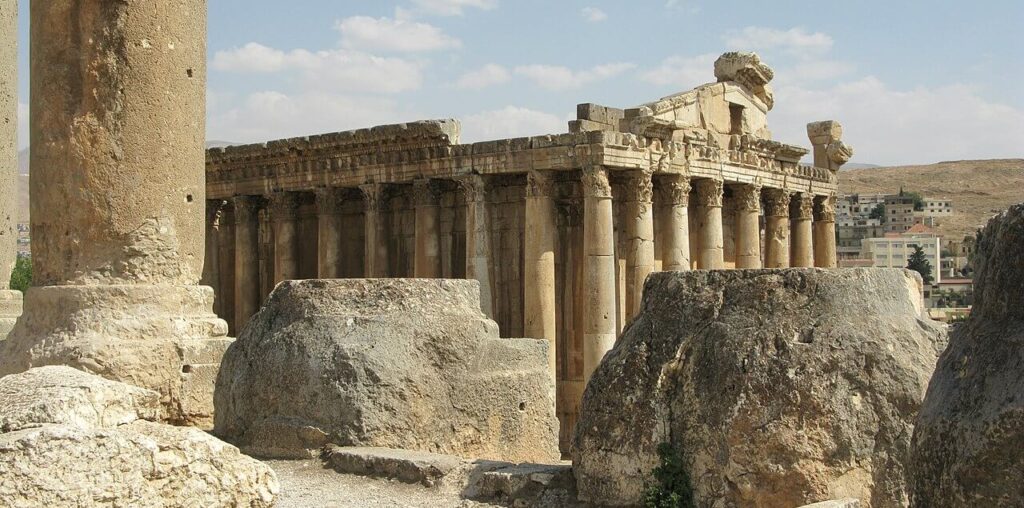Less than one month into Israel’s aerial and ground invasion of Lebanon, myriad historic buildings and areas are under threat, including UNESCO World Heritage Sites, according to Lebanon’s culture minister Mohammad Mortada. These assaults came on the heels of Benjamin Netanyahu’s ominous words from October 9 when Israel’s prime minister told reporters Lebanon could become “like Gaza.”
Lebanon is home to six UNESCO World Heritage Sites: Those are in Baalbek, Byblos, Tyre, Kedisha Valley, Aanjar, and Tripoli. Rachid Karami International Fair, completed in Tripoli by Oscar Niemeyer in 1962, is the newest addition, which was added to the list in 2023.
So far one of Lebanon’s UNESCO World Heritage Sites has been threatened, Mortada confirmed. Baalbek, an ancient city 20 miles east of Beirut, was shelled in early October. The New Arab reported that rockets came within just a few hundred feet of three ancient Roman temples built in Baalbek by the Phoenicians.
Antiquity Under Threat
The Temples of Venus, Jupiter, and Bacchus in Baalbek were built more than 11,000 years ago. The structures from antiquity weren’t directly hit, but their proximity to missile fire prompted Mortada to issue a plea for international help in protecting the ancient ruins.
“UNESCO is responsible for looking over these sites,” Mortada said, “and we’ve asked our mission to inform the UN and its Security Council to demand Israel to respect international laws and not harm our heritage.”
Intentionally damaging UNESCO World Heritage Sites constitutes a war crime according to the International Criminal Court. In response to Israel’s recent attack on Baalbek, a UNESCO spokesperson said it “is closely following the impact on Lebanese cultural sites such as Baalbek. UNESCO is in contact with site managers to assess the state of conservation at the sites and help take protective measures where necessary.”
The International Alliance for the Protection of Heritage in Conflict Areas (Aliph) is now trying to secure funds and protect Baalbek’s temples from shelling. “I was in Lebanon a few days ago to evaluate the situation with the director general of antiquities of Lebanon and his team,” said Aliph executive director Valery Freland. “We continue to maintain very close contact with them and they are keeping us updated on the threat to cultural heritage in the country.”
Bombs Over Beirut
The strikes on Baalbek arrived the same week an ancient Islamic graveyard in Beirut’s Bashoura neighborhood was almost entirely destroyed by rockets. That strike happened not far from where We Design Beirut was staged just last May.
More recently, on October 10, another historic neighborhood in central Beirut was shelled, Raas el-Nabaa. The attack killed at least 22 people and injured more than 100 according to Al Jazeera. It’s unclear at this time which and how many buildings in Raas el-Nabaa were impacted, but the quarter is home to many landmarks.
The National Museum of Beirut, which contains precious artifacts from antiquity, is sited in Raas el-Nabaa; and so is Beit Beirut, an important cultural venue that serves as a museum and memorial to the Lebanese Civil War. The Embassy of France, a complex completed in 2003 by architects Yves Lion and Claire Piguet, is in Raas el-Nabaa. So is the historic campus of the University of Saint Joseph.
To the south, analysts recently estimated that 79 percent of Gaza’s mosques have been destroyed. No cultural heritage sites in Israel have been reportedly damaged at this time because the wide majority of incoming missiles from Hezbollah, Hamas, and Iran have been thwarted by Israel’s Iron Dome.

